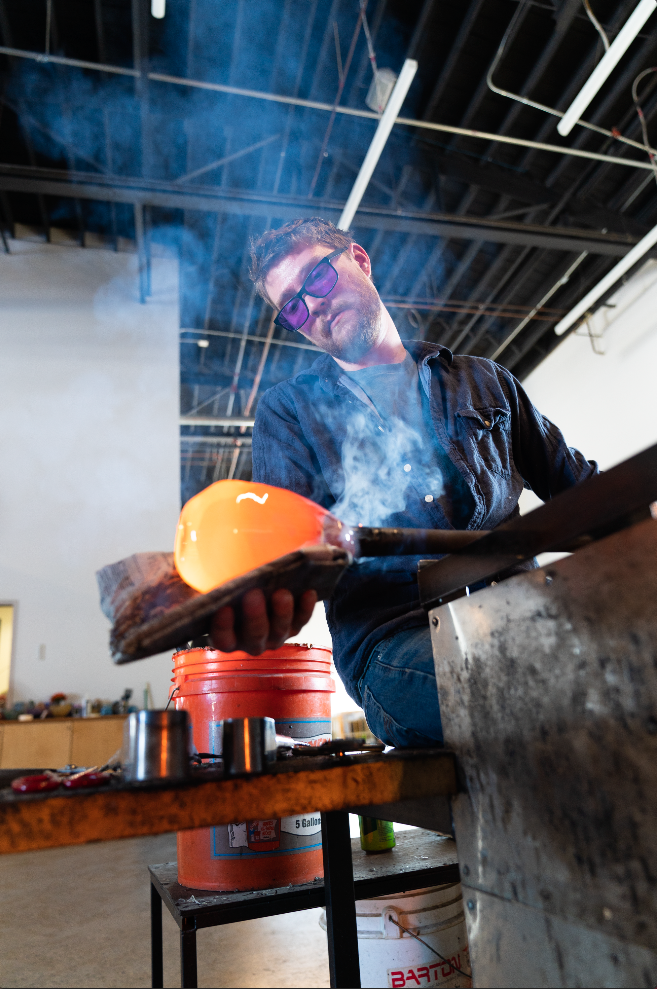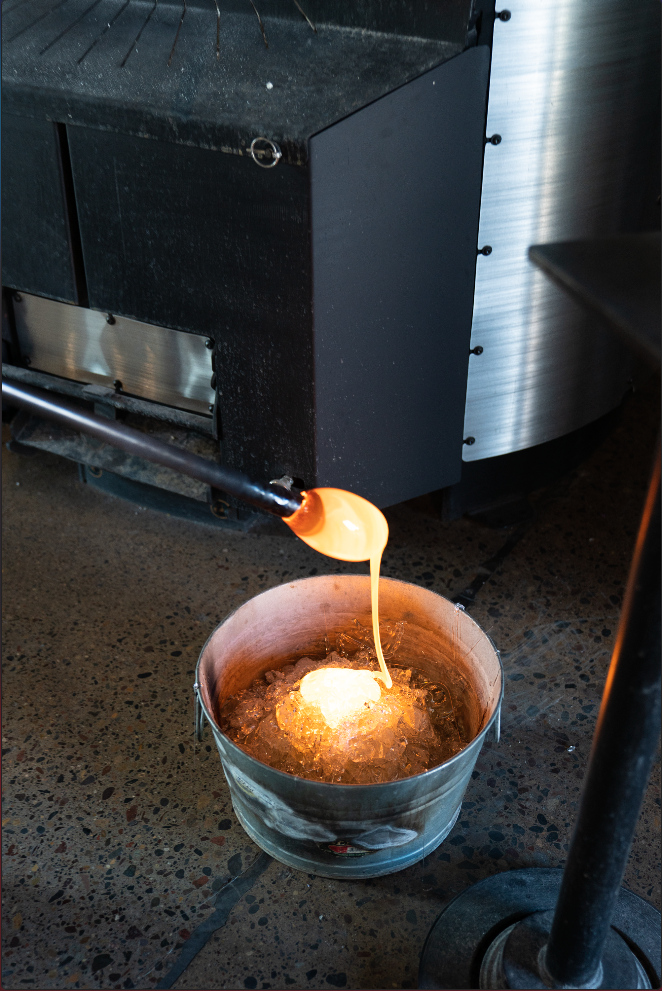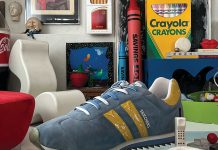Photos by David Ellis

If you had asked Bryce Borkhuis five years ago if he could imagine himself in a full-time career managing a glassblowing studio and regularly instructing others in the ancient artistic technique, he “would’ve said no in a heartbeat,” he laughs. Back then, the
co-owner of Vandalia Glassworks was actually planning on quitting his job in retail and heading back to school when Erick Schmidt offered him a part-time job at his new independent glass studio in South St. Paul—a place Schmidt envisioned where local glass artists could come to hone their craft and display their works while guests could browse a gallery of those colorful creations or even try their own hand at a class or two. Although Borkhuis initially joined to assist with the business side of the company, he soon discovered his own passion for glassblowing—transforming what began as a temporary gig into a lifelong vocation.
How did you make the jump from business operations to glassblowing yourself?
After we got the ball rolling with the shop, the studio started to grow and expand, and we were looking for instructors for the classes. The only other person on the roster at the time was me, so I just went for it and tried to learn as quickly as I could so I could train other people. Honestly, I didn’t know a single thing about glass at the time, so it was definitely a trial by fire!
Describe the glassblowing process.
First of all, it’s pretty intense. You’re pulling molten glass out of a furnace at 2,100 degrees Fahrenheit. Then you add in your colors and layer more glass on top, and then reheat it in the furnaces. You have to do it all in one take. You can’t let the glass get too cold and then reintroduce very high temperatures because you run the risk of cracking.
What do you think is the most challenging aspect of glassblowing?
The shaping process, mainly because of how intimidating it is. We use newspaper to shape the glass—about eight to 10 sheets, folded into thirds (and then thirds again) and soaked in water—because it allows for more dexterity than wearing gloves. That newspaper is the only barrier between the glass and your hand. Plus, glass is fluid when it’s hot, so you have to keep it moving. You’re turning the pipe with your left hand while shaping the glass with your right—it’s a lot like patting your head and rubbing your stomach, except you’re constantly dancing with this state that’s between a liquid and solid.
How do you find inspiration for your pieces?
A lot of my own personal work follows a space theme since I follow a bunch of space-related Instagram accounts. I’m also always surrounded by other very talented artists, so just watching other people work every day gives me the opportunity to learn new techniques. They say if you want to be good at something, you should surround yourself with people who are better at it than you.
To you, what is the most fun part of the process?
Seeing how the color of the final product turns out. If you’ve never worked with glass before, it’s kind of a strange experience—everything is orange, red, or brown while it’s hot. It’s only once the glass starts to cool that you see the true nature of the color you applied, and when you first start, it can be very surprising to see how it ends up.
What is one of your own favorite pieces you’ve created?
A few years ago, Erick and I did several elaborate butterflies. They were about 18-by-22 inches in size, super detailed, and took an extraordinarily long time to piece together—about 14 hours, with an additional 24 hours to fuse and shape. I took one home. It was very time-consuming to make, but worth it in the end. It’s the only piece I’ve kept for myself.
What do you want guests to gain from their glassblowing experience?
An appreciation for the material and process. Today, almost everything is made by machines, so when people come in and take a class, it gives them a chance to realize how things are done by hand. [It encourages] a different appreciation for what it takes to create something out of glass.






















